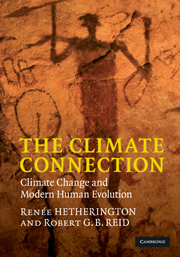Book contents
References
Published online by Cambridge University Press: 05 August 2012
- Type
- Chapter
- Information
- The Climate ConnectionClimate Change and Modern Human Evolution, pp. 357 - 406Publisher: Cambridge University PressPrint publication year: 2010



